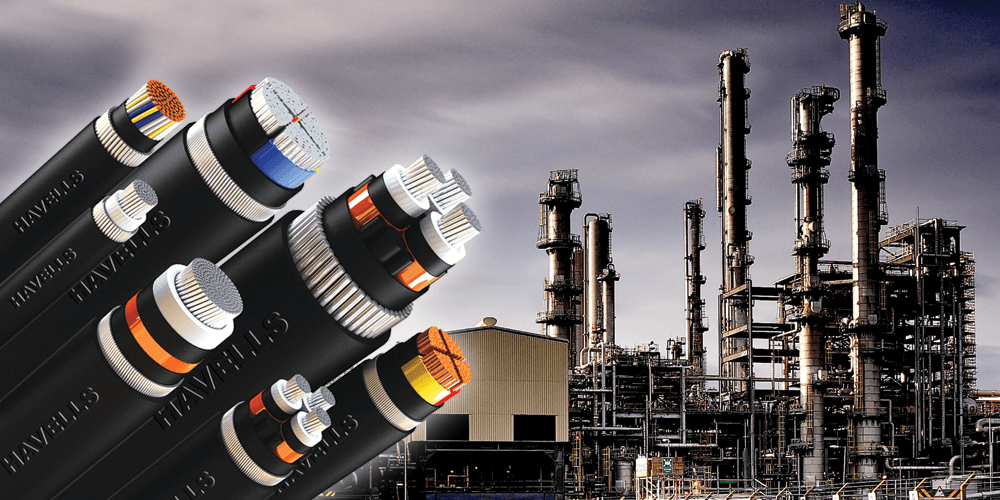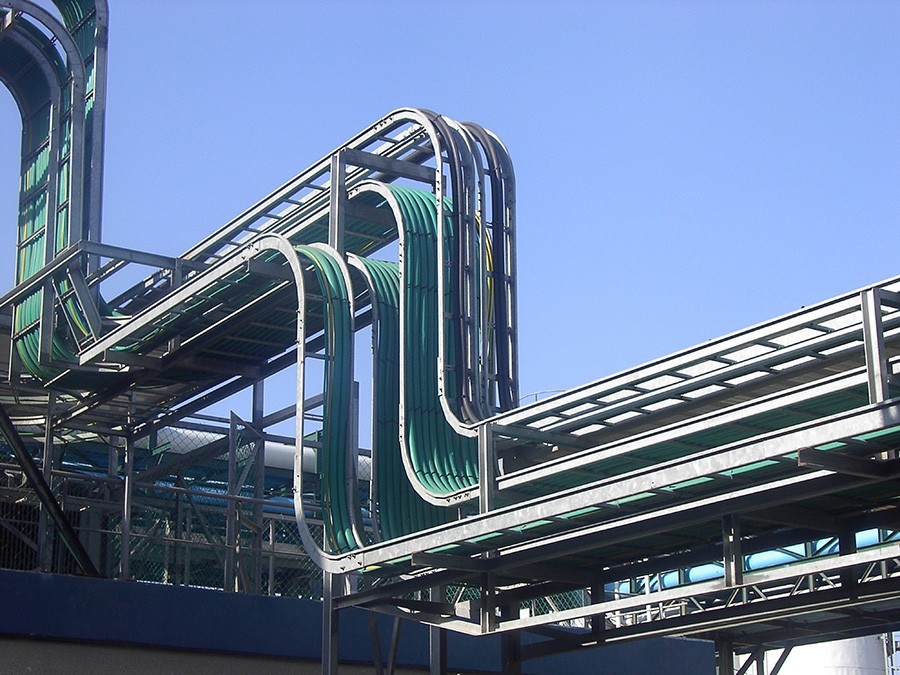In the realm of electrical systems, ensuring safety and proper functionality is paramount.
One of the critical components that contribute to this is the grounding cable. This article ZMS Cable delves into the intricacies of grounding cables, exploring their classification, applications, and the crucial role they play in electrical safety.

What is a Grounding Cable?
A grounding cable, also known as an earth cable or ground wire, is a conductor used to connect electrical circuits or equipment to the ground. This connection to the earth is essential for protecting the system from electrical faults, providing a safe path for excess electricity to dissipate, and minimizing the risk of electric shock and fire.
Classification of Grounding Cables
Grounding cables can be classified based on various factors, including the material of the conductor, the type of insulation, the application, and the specific standards they comply with. Here, we will categorize grounding cables according to these criteria:
1. Conductor Material
The conductor material's choice significantly impacts the grounding cable's performance and suitability for different applications.
a. Copper Grounding Cables
Copper is the most commonly used material for grounding cables due to its excellent conductivity, durability, and resistance to corrosion. Copper grounding cables are available in various forms, including bare copper, tinned copper, and coated copper.
Bare Copper: This is the most straightforward form of copper grounding cable, widely used in various grounding applications due to its high conductivity.
Tinned Copper: Copper coated with a thin layer of tin enhances its resistance to oxidation and corrosion, making it suitable for harsh environments.
Coated Copper: These cables have an additional layer of protective coating, providing extra durability and longevity.
b. Aluminum Grounding Cables
Aluminum is another material used for grounding cables, primarily due to its cost-effectiveness and lightweight properties. However, aluminum has lower conductivity compared to copper and requires larger conductors to achieve the same performance. Aluminum grounding cables are often used in industrial and utility applications where weight and cost are critical factors.
2. Insulation Type
Grounding cables can be either insulated or bare, depending on the application's specific requirements.
a. Bare Grounding Cables
Bare grounding cables have no insulation and are directly exposed to the environment. They are commonly used in applications where insulation is unnecessary, such as in grounding rods and grounding grids.
b. Insulated Grounding Cables
Insulated grounding cables have a protective layer of insulation to prevent direct contact with other conductive materials and to provide additional protection against environmental factors.
The type of insulation used can vary, with common materials including PVC (polyvinyl chloride), XLPE (cross-linked polyethylene), and EPR (ethylene propylene rubber).
PVC Insulated Cables: PVC offers good electrical insulation properties and is resistant to moisture and chemicals. It is widely used in residential and commercial applications.
XLPE Insulated Cables: XLPE provides excellent thermal and mechanical properties, making it suitable for high-temperature environments.
EPR Insulated Cables: EPR insulation offers superior flexibility and resistance to ozone, weathering, and chemicals, making it ideal for industrial applications.

3. Application
Grounding cables are classified based on their specific applications, ranging from residential and commercial to industrial and utility environments.
a. Residential Grounding Cables
In residential applications, grounding cables are used to protect household electrical systems and appliances. These cables ensure that any excess electricity from electrical faults is safely directed to the ground, reducing the risk of electric shock and fire.
b. Commercial Grounding Cables
Commercial buildings have more complex electrical systems that require robust grounding solutions. Grounding cables in commercial settings are used to protect sensitive equipment, ensure proper operation of electrical systems, and comply with safety standards.
c. Industrial Grounding Cables
Industrial environments often involve heavy machinery and high-power equipment, necessitating grounding cables with high conductivity and durability. These cables protect equipment from electrical faults, prevent electrostatic discharge, and ensure worker safety.
d. Utility Grounding Cables
Utility applications involve grounding cables used in power generation, transmission, and distribution systems. These cables must withstand harsh environmental conditions and provide reliable grounding for large-scale electrical infrastructure.
Applications of Grounding Cables
Grounding cables are employed in a wide range of applications to ensure electrical safety and system reliability. Here are some of the key applications:
1. Grounding Electrical Systems
Grounding cables are integral to grounding electrical systems in residential, commercial, and industrial settings. They connect the electrical system to the earth, providing a safe path for excess electricity to dissipate during electrical faults. This helps protect the system from damage and reduces the risk of electric shock.
2. Lightning Protection
In areas prone to lightning strikes, grounding cables are used in conjunction with lightning protection systems to safely dissipate the high-voltage energy from lightning strikes into the ground. This prevents damage to buildings, equipment, and electrical systems.
3. Grounding of Equipment
Grounding cables are used to ground electrical equipment and machinery, ensuring that any fault currents are safely directed to the ground. This is especially important in industrial settings, where the risk of electrical faults is higher due to the presence of heavy machinery.
4. Grounding of Communication Systems
Grounding is crucial for communication systems to protect sensitive equipment from electrical surges and interference. Grounding cables help maintain the integrity of signal transmission and ensure reliable operation of communication networks.
5. Grounding of Renewable Energy Systems
Renewable energy systems, such as solar and wind power installations, require effective grounding to ensure safe and reliable operation. Grounding cables connect the electrical components of these systems to the ground, protecting them from electrical faults and lightning strikes.
6. Grounding of Utility Systems
Utility systems, including power generation, transmission, and distribution networks, rely on grounding cables to ensure the stability and safety of the electrical grid. These cables help manage fault currents, prevent equipment damage, and enhance overall system reliability.
7. Grounding of Portable and Temporary Systems
In scenarios where temporary or portable electrical systems are used, such as construction sites or outdoor events, grounding cables provide a safe grounding solution. These cables ensure that any fault currents are safely directed to the ground, protecting both equipment and personnel.

Importance of Proper Grounding
Proper grounding is essential for several reasons, including safety, equipment protection, and system reliability. Here are some key benefits of proper grounding:
1. Safety
Grounding provides a safe path for excess electricity to dissipate, reducing the risk of electric shock and fire. It ensures that any fault currents are safely directed to the ground, protecting personnel and preventing accidents.
2. Equipment Protection
Proper grounding protects electrical equipment from damage caused by electrical faults, surges, and lightning strikes. It helps maintain the longevity and reliability of electrical systems and reduces maintenance costs.
3. System Reliability
Grounding enhances the overall reliability of electrical systems by providing a stable reference point for voltage levels. It helps prevent electrical interference, maintains signal integrity, and ensures the proper operation of sensitive equipment.
4. Compliance with Standards
Proper grounding ensures compliance with electrical safety standards and regulations. It is a critical aspect of electrical system design and installation, helping to avoid legal issues and ensuring the safety of the installation.
Conclusion
Grounding cables play a vital role in ensuring electrical safety, protecting equipment, and enhancing the reliability of electrical systems.
Understanding the classification and applications of grounding cables is essential for selecting the right solution for different environments and requirements.
Proper grounding is indispensable for safe and efficient electrical systems in residential, commercial, industrial, or utility settings.
In summary, grounding cables are the unsung heroes of electrical systems, providing the necessary connection to the earth that ensures safety and reliability.
Their importance cannot be overstated, making them a critical component in the design and operation of any electrical installation. By understanding their classification and applications, we can appreciate the vital role they play in modern electrical systems.